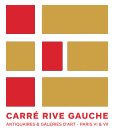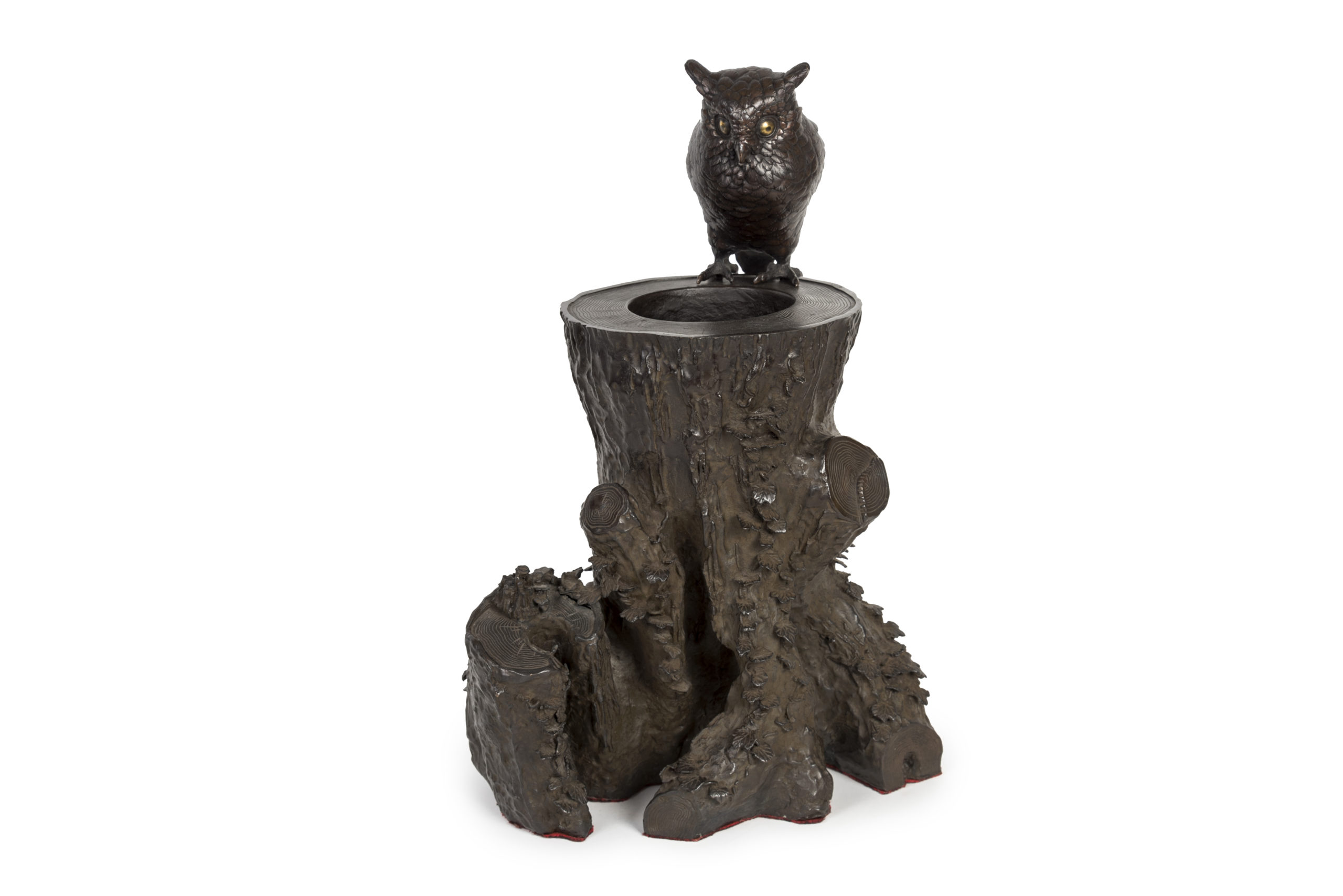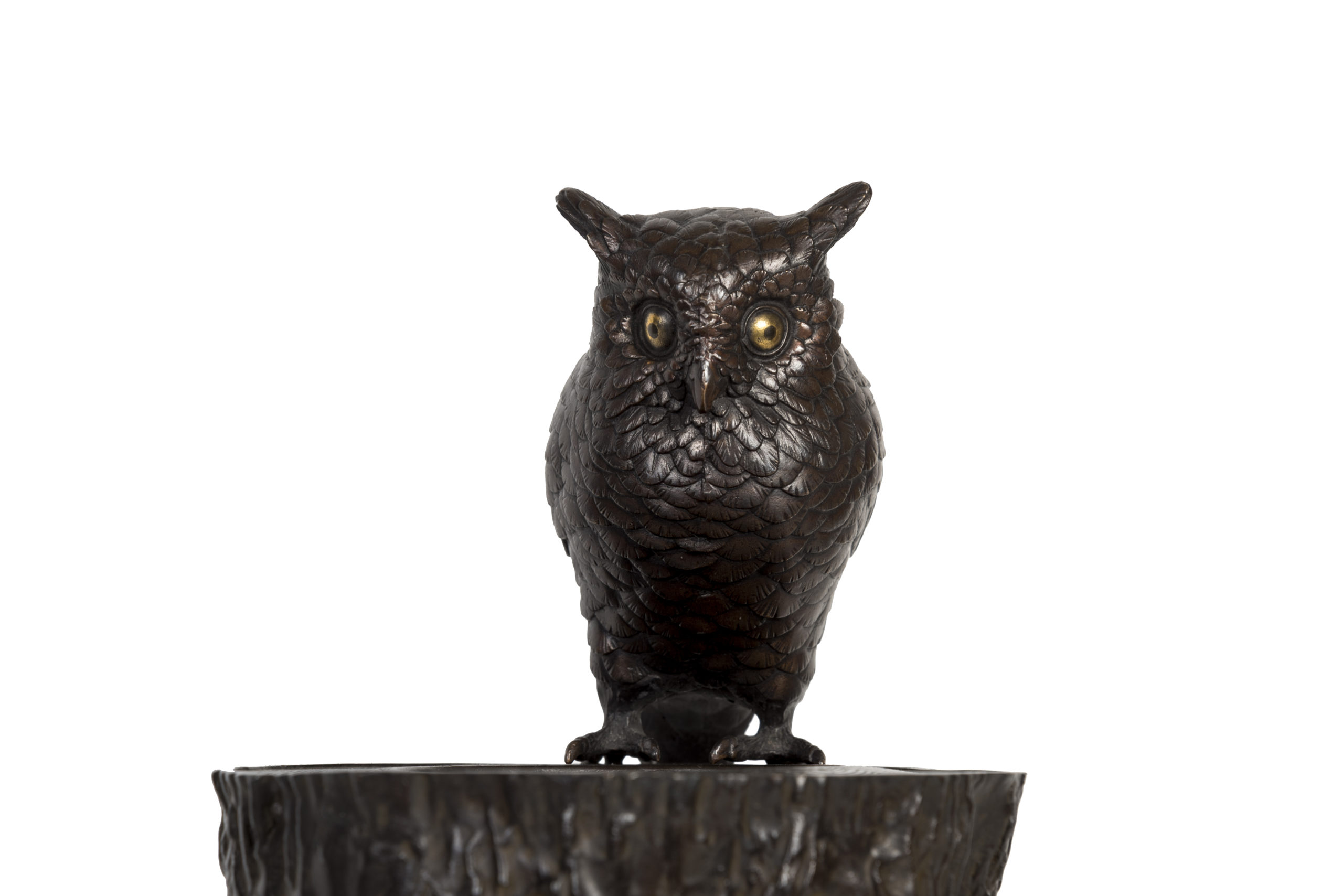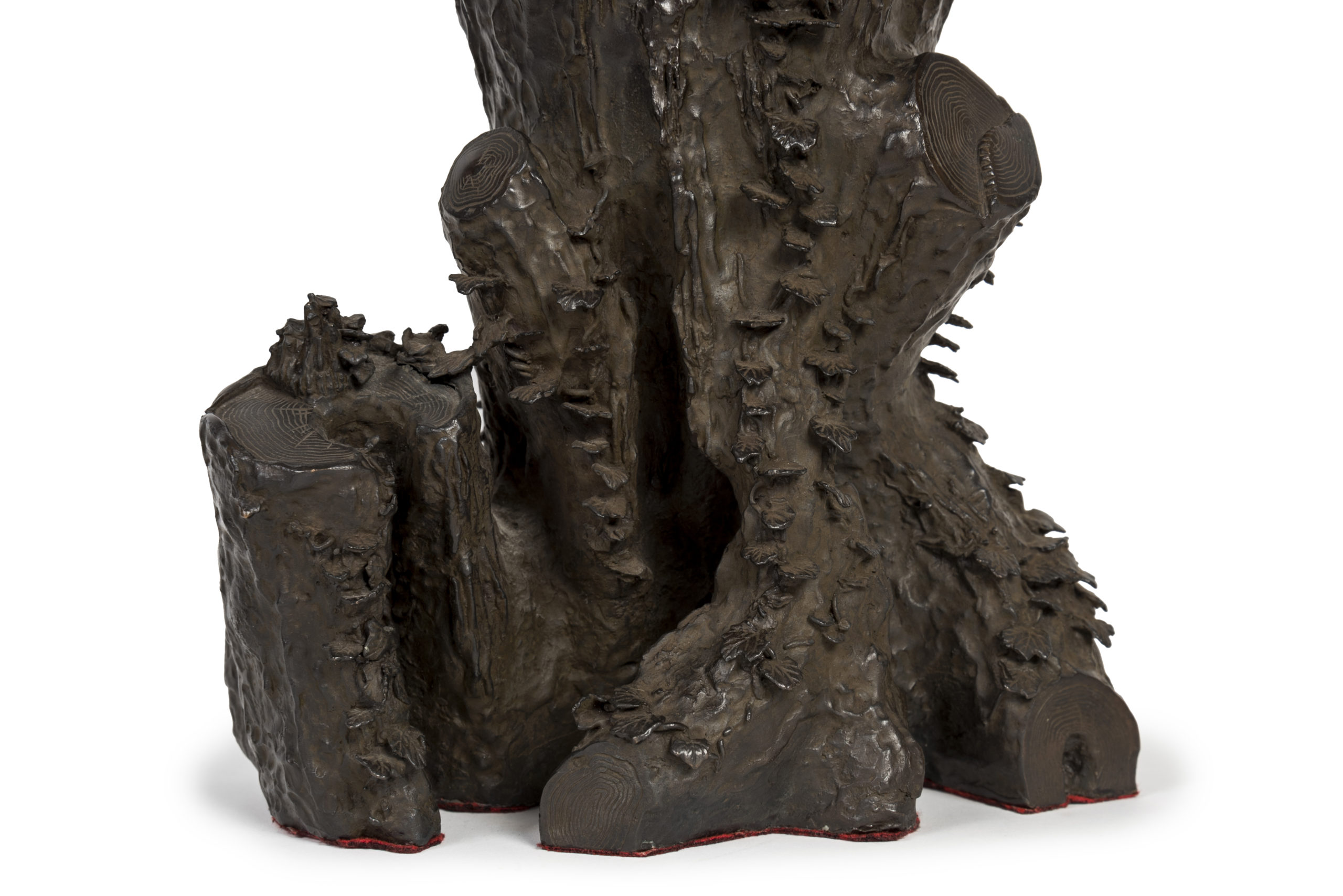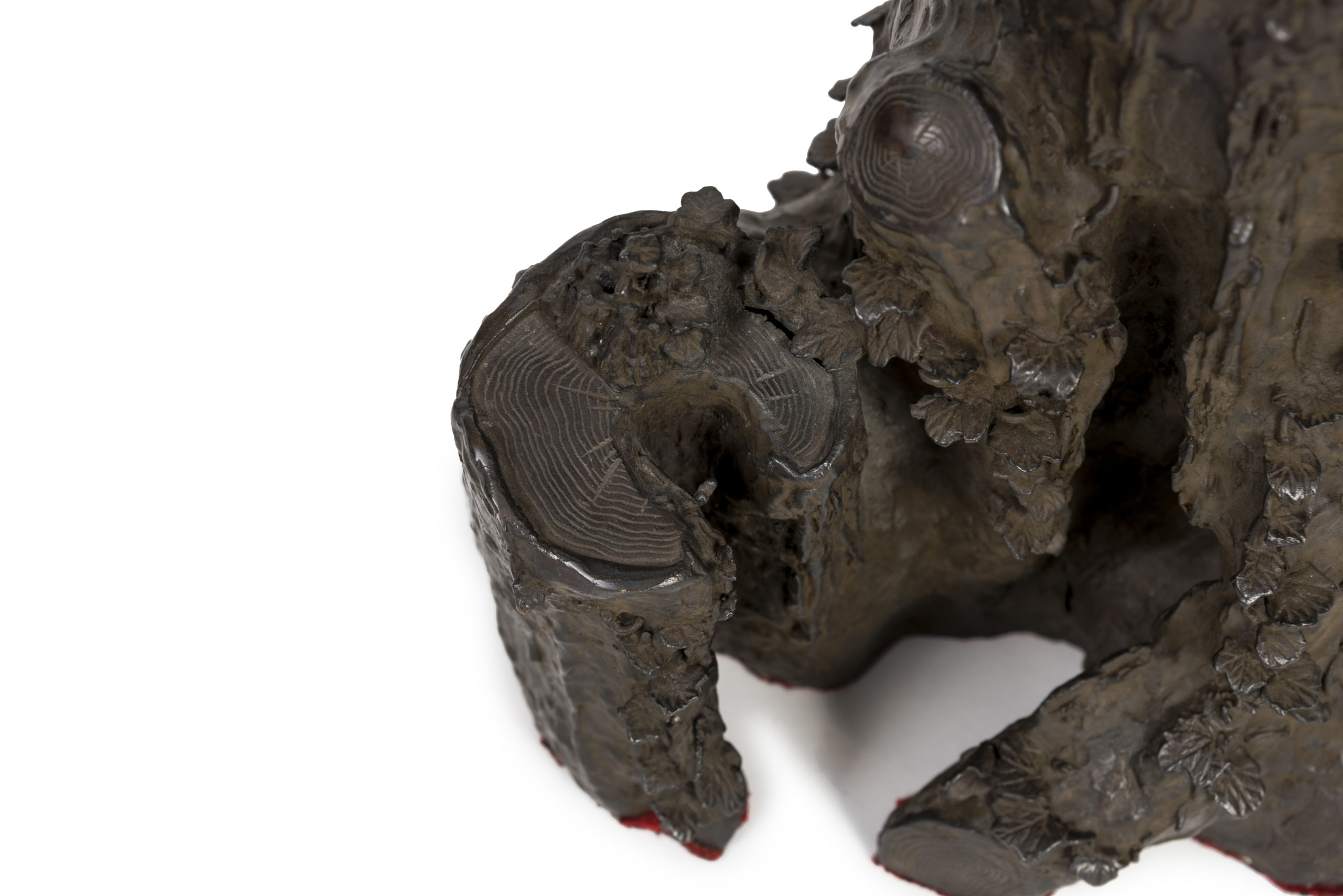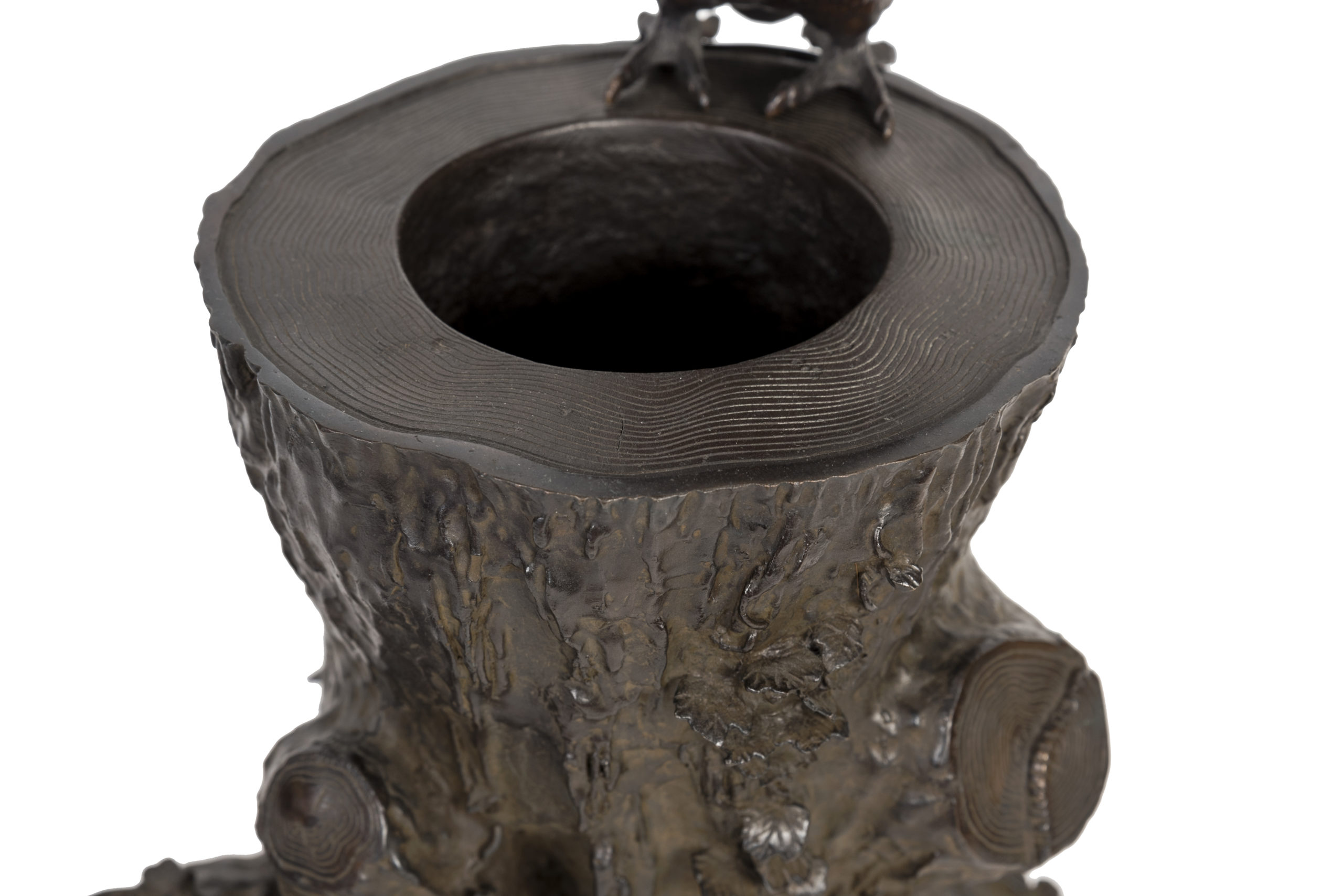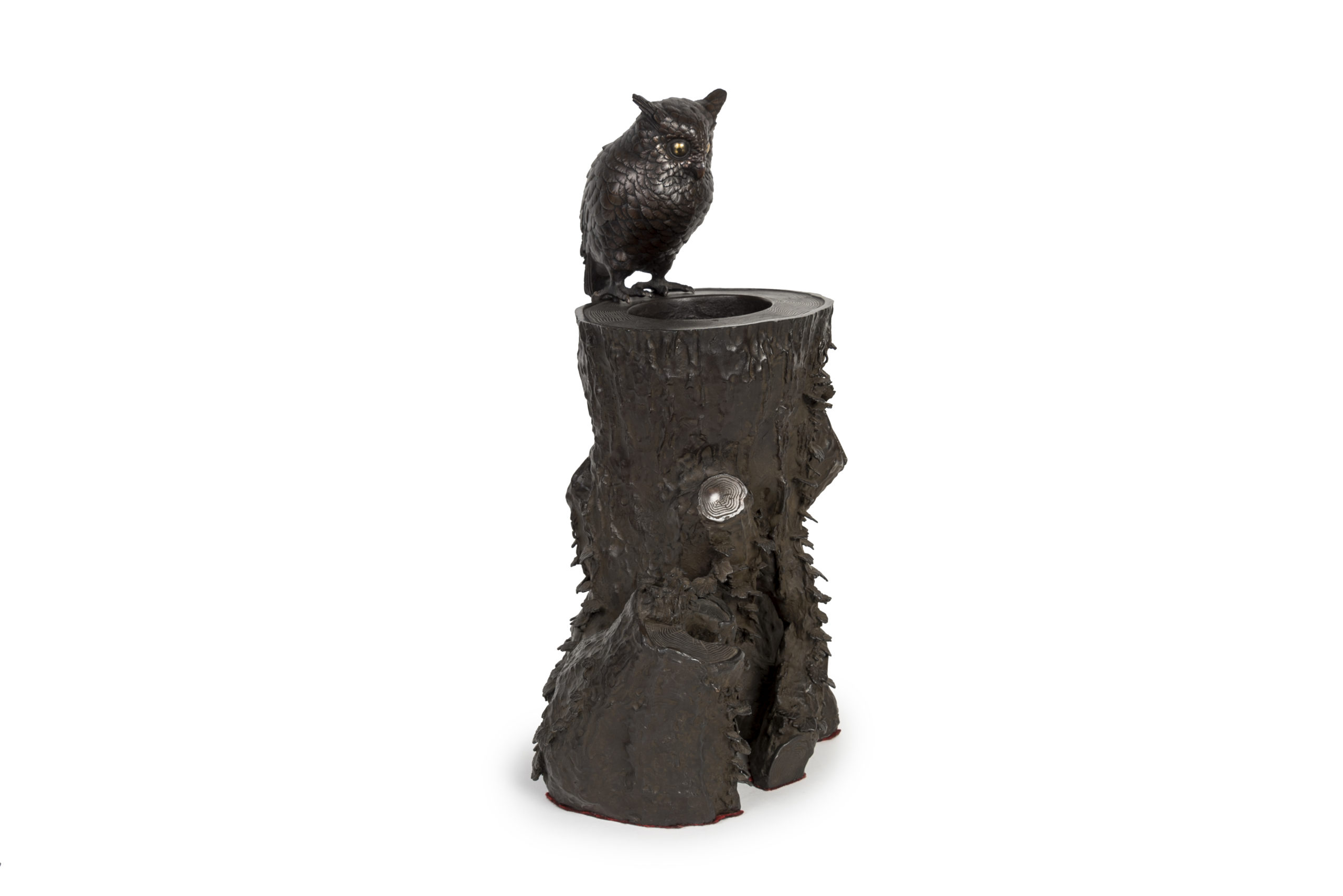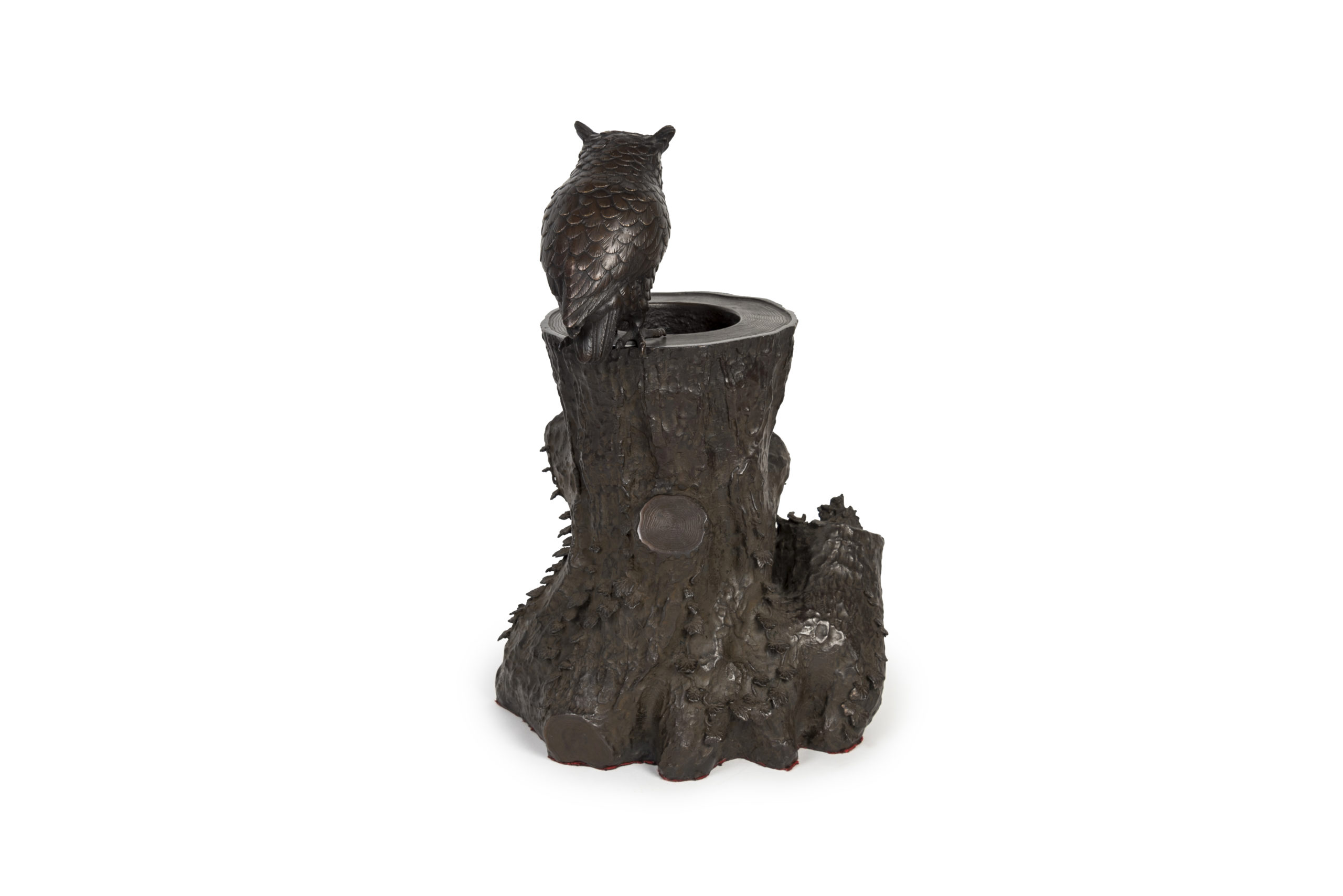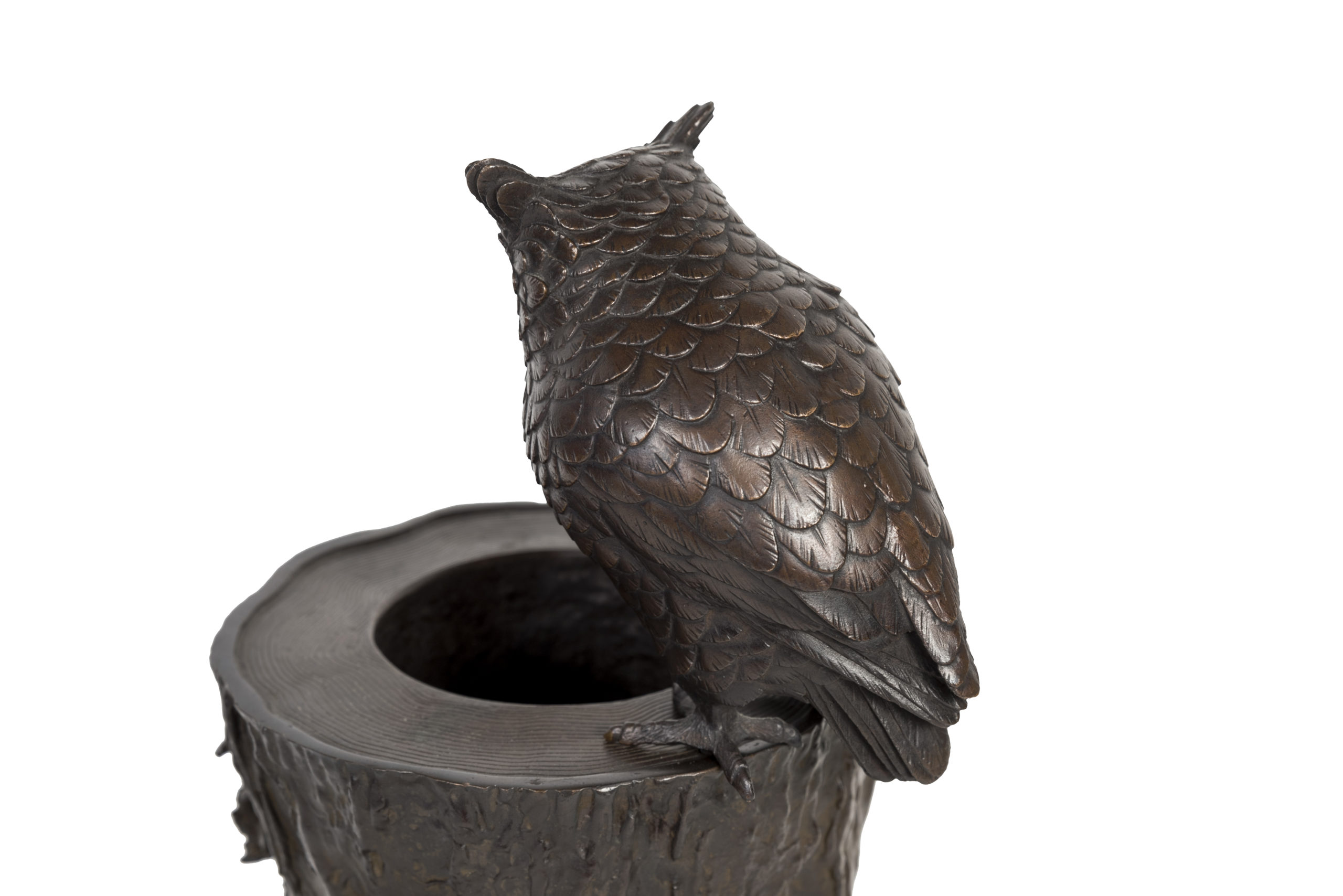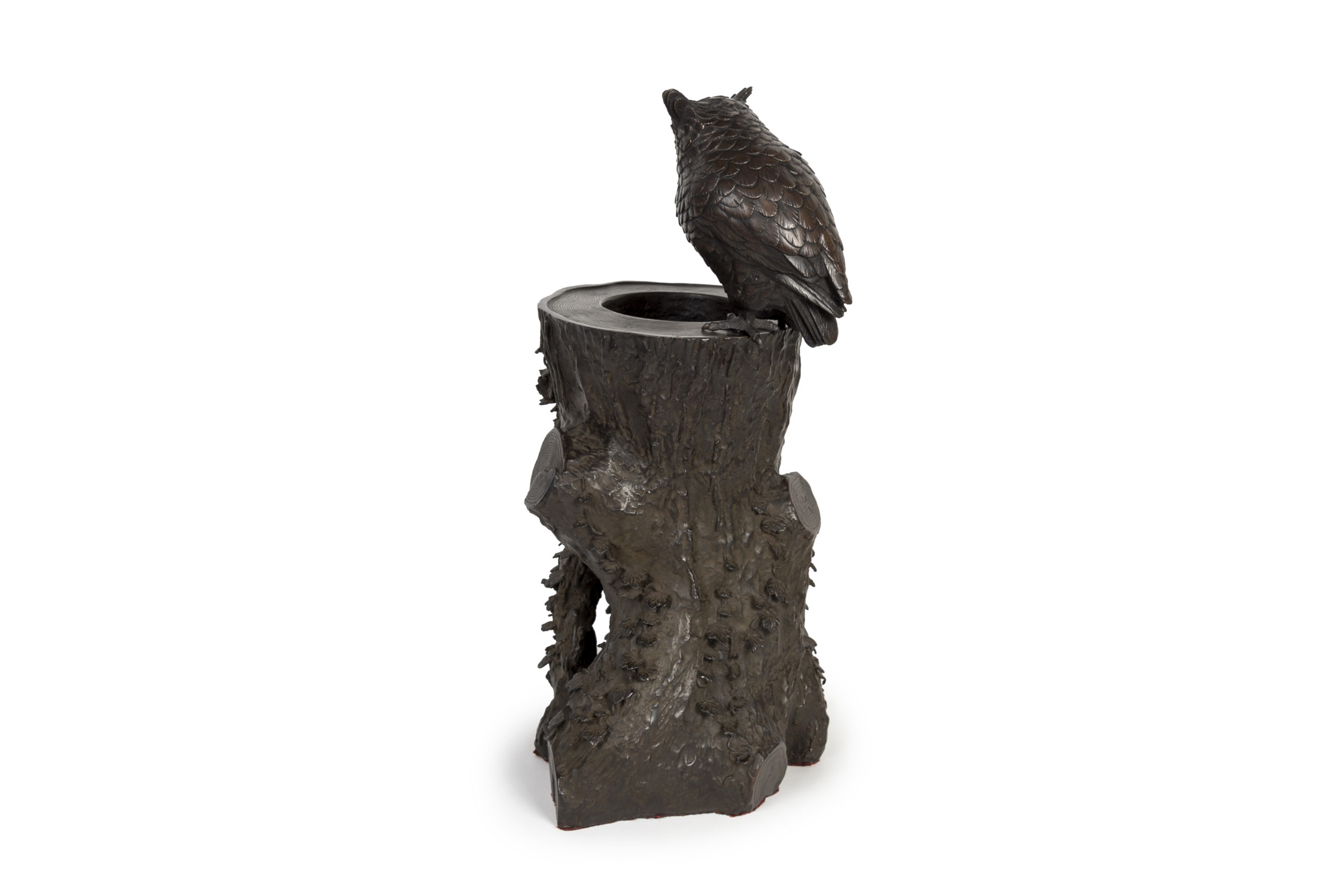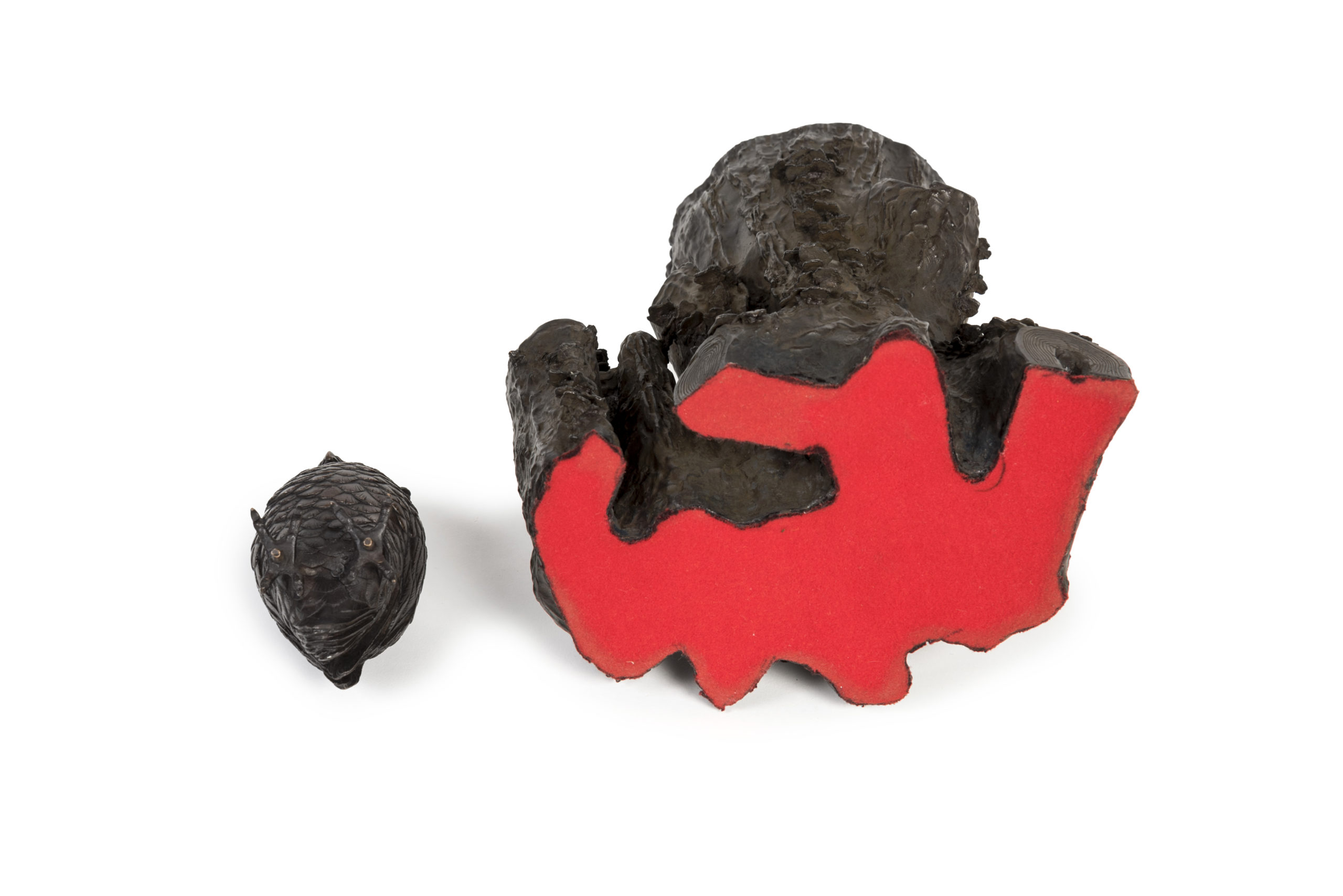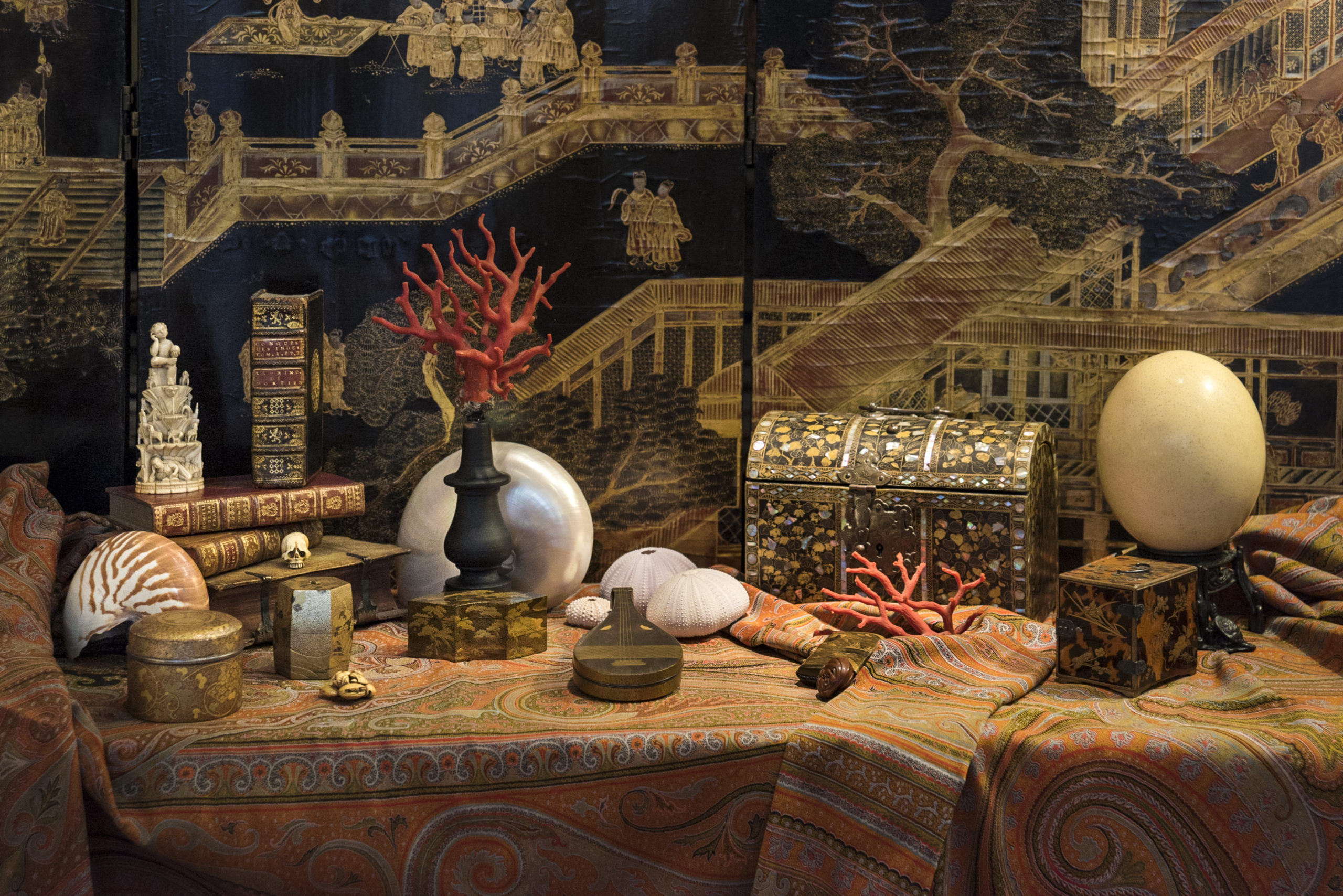Description
Il s’agit certainement du petit-duc élégant (Otus elegans), présent au sud du Japon dans les îles Ryûkyû.
Tissu rouge encollé à la base du tronc afin de protéger la base et le socle (non d’origine).
Le hibou (fukurô, 梟) symbolise la chance et la protection contre les épreuves. Par homonymie, fukuro peut signifier « la chance qui arrive » (福来郎) ou « sans difficultés » (不苦労). De plus, pouvant voir dans l’obscurité, il est réputé pour avoir une grande sagesse et le pouvoir de prédire l’avenir.
Japon – Ère Meiji (1868-1912)
Hauteur : 37 cm – largeur : 24 cm – profondeur : 17 cm
It is certainly an Ryûkyû scops owl (Otus elegans), present in the south of Japan in Ryûkyû Islands.
Red fabric glued to the base of the trunk to protect the base and the pedestal (not original).
The owl (fukurô, 梟) symbolizes good luck and protection from hardship. By homonymy, fukuro mean « good fortune coming » (福来郎) or « without difficulties » (不苦労). Furthermore, being able to see in the dark, it is famous to have great wisdom and the power to predict the future.
Japan – Meiji era (1868-1912)
Height: 14.57 in. (37 cm) – width: 9.45 in. (24 cm) – depth: 6.7 in. (17 cm)
